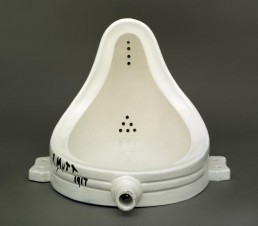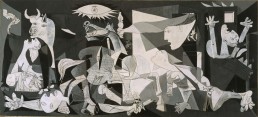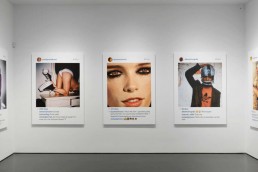Controversial Art… Does It Get To You?
By Peter Birch
What makes a work of art controversial? Is it possible to label certain pieces as ‘controversial’ due to a set of specific characteristics? Or is it feasible that the understanding of the term ‘controversial’ is more fluid? After all, isn’t ‘controversial’ by definition a term that gives rise to different opinions?
Throughout history there have been many examples of art that has provoked, offended and upset its audience. Whether dealing with politics, ethics, sexuality, or religion, these works have pushed the boundaries of what art is. In this article, I’ll discuss the various ways in which art plays the role as a middle finger to society or an instrument for change.

Broadly defined art is “the expression of human creative skill and imagination”. Evil tongues will claim that art usually resembles nothing at all and contain zero value in the real world. What if you turn this assumption upside down and insist that anything can be art? That it is – to refer to the definition above – a question of imagination. The French-American artist Marcel Duchamp was indeed capable of imagining which he proved when he in 1917 designated an urinal a piece of art. The work, which was titled ‘Fountain’ was a so-called readymade and later became known as one of the most infamous art pieces in the 21st century because it questioned the whole definition of art and demonstrated how a single work of art can be used as an unflinching statement in a world filled with high hopes and thin air. Also worth mentioning is the American minimalist Carl Andre’s “Equivalent VIII” an artwork that caused a lot of debate and prompted the question; can a pile of old bricks placed in a rectangular shape on the floor be art? The answer is for you to decide.

Besides mocking the established art world and challenging the perception of what art is as Duchamp and Andre did, art can also be of political or societal character. Pablo Picasso made his famous ‘Guernica’ as a harsh statement against the German aerial bombing of the Basque town of Guernica in 1937 during the Spanish Civil War. In the same anti-war statement fashion, Danish artist Bjørn Nørgaard’s seminal performance and film work from 1970, The Horse Sacrifice created in collaboration with Henning Christiansen and Lene Adler Petersen, was a protest to the Vietnam war. The slaughtering of a horse juxtaposed to the slaughtering of thousands of innocent people in the tragic war evoked strong responses from large parts of the Danish art world and media. Nowadays artists like Banksy or Chinese Ai Wei Wei are known for their multiple works of societal or political character, constantly challenging our society norms or critiquing those in power. Art can definitely be used as a strong weapon against power structures in society, if used as a statement to arouse public sentiment or as battle cry against social injustice.

The plot seems to thicken further with the rise of social media. Today anybody can strike a pose on social media platforms such as Facebook and Instagram, and oh boy, a lot of people do so, which the American artist Richard Prince explored in a somehow spicy manner. In his 2014 show ‘New Portraits’, he showed the ugly face of everyday self-obsession by printing other peoples’ Instagram posts onto six-foot tall blank canvases and displaying the photos without any kind of permission. Aiming for you and me. Perhaps the best example of how art can strike a very personal blow against our navel-gazing use of social media.
Finally, I will draw your attention to a very curios trade of art, which took place last year, and made the whole (art) world heat up. The Saudi crown prince, Mohammed bin Salman, acquired Leonardo da Vinci’s masterwork “Salvator Mundi” for the staggering amount of $450 million. This made the “Salvator Mundi” the highest priced work of art sold to a private person. In this case, dear reader, you might wonder how the heck a piece of art can be worth so much. I do not have a definite answer for you, but I guess we are thinking the same. That is simply impossible.
Does a well-defined answer exist on how art can be controversial? Definitely not. It depends on a range of factors and the specific work in question. Nonetheless, it is certain that artists will never stop provoking, challenging and questioning status quo. If anything, imagining new ways of seeing, experiencing and navigating the world is part of art’s DNA.

About Peter Birch
Driven by a curious mind, 27-year-old historian Peter Birch is constantly looking for new adventures in his city Copenhagen. As an avid explorer, he seeks out every nook and cranny in the world of art. He is no expert in the field, but he is an expert in asking questions and challenging the predominant opinions. Follow in Peter’s footsteps and discover the art world through new eyes.
Get your free copy of Artland Magazine
More than 60 pages interviews with insightful collectors.